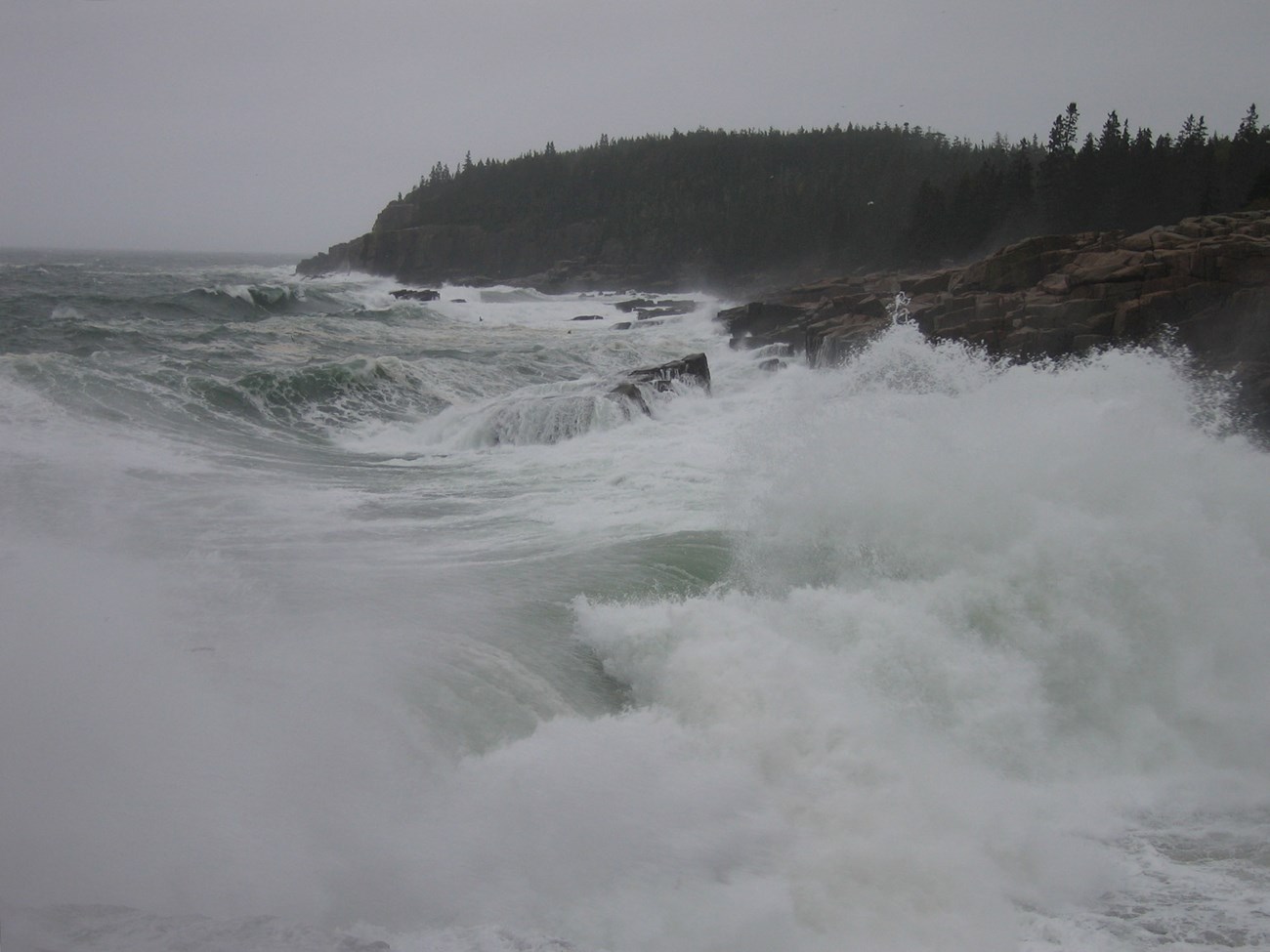
WeatherNor'eastersHurricanes get a lot of attention, but there’s another kind of storm that is more common and damaging for Acadia: Nor’easters. Like a hurricane,Nor’esters occur in the North Atlantic Ocean, are characterized by strong winds and large waves, are typically accompanied by heavy precipitation, and can cause substantial coastal erosion. Clmate change is driving Nor'easters to be more frequent and more damaging. While we don’t know if this trend will continue, we do know that storms will have a more severe impact because the sea is rising. (As evidence for higher seas, normal high tides are causing flooding more often. In 2019, this “sunny day” flooding occurred six days in Acadia, the January and March 2018 nor’easters set records for the highest and third-highest tides in history, respectively. Higher water levels means storm waves and flooding also reach farther inland. Waves and storm surge collide with the shoreline, wash over dunes and beaches, and flood low-lying areas. Nor’easters cause erosion of beaches and dunes, and damage visitor infrastructure such as roads, trails, and docks. Though usually weaker than hurricanes, Nor’easters cause more coastal erosion because they occur more often and, because of their slow movement, can affect the coast for days rather than hours, encompassing multiple high tides. They can bring significant rain and/or snow and ice, and cold temperatures that can complicate clean-up and rescue efforts. Snow & IceIce has been shaping the Acadian landscape since the beginning of time. The glaciers that once covered Acadia eroded the mountains and cut broad U-shaped valleys. Materials carried at the base of the ice polished the mountains and left long scratches (striations) and crescent-shaped gouges (crescentic gouges) in many places along with other geologic features.Today, snow and ice often gouge rocks and mountains sides on an annual basis. Though the vast movement of ice sheets are gone, daily fluctuations in melitng ice and snow drives apart cracks in Acadia's mountains. WavesIn an eternal rhythm, waves pound Acadia's shoreline. The force of the waves erodes the granite and basaltic rock of Acadia's rocky coast breaking the vast amounts of rock down into smaller and smoother pieces. |
Last updated: September 21, 2022
